From the farm, I took in Melbourne and Adelaide, then headed into Australia’s empty interior.
Its easy to forget how big Australia is.
The 6th biggest country in the world in area but only 56th for population. One website quoting the UN ranks it 230th for population density with just 3.32 people per km. This is further skewed by the fact that around 85% of Aussies live within 50km of the coast, leaving a whole lot of space in the middle. The size and sparseness of inhabitation meant many hours on buses, setting off at dawn to cover hundreds of miles while stopping off at points of interest on the way.
A few hours out of Adelaide the vegetation changed in hue from green to beige and became more sparse. The towns got smaller and further apart and traffic reduced to two main vehicle types; senior citizens in motor homes and road trains. Massive lorries pulling two or three trailers up to 53 metres long delivering goods to the outer reaches that power along at 100kmh on the straight and empty roads. Overtaking one of them takes nerve as well as plenty of time.
There was also a familar sight of roadkill in the form of dead kangaroos.
For variation it was an emu we encountered. They grow to nearly 2 metres and can run at nearly 50kmh. One morning I watched one running parallel to the road slightly ahead of us. Quite the sight to see it going full tilt. But for reasons known only to its birdbrain, it veered 90 degrees – straight into our path.
There was a loud bang and explosion of feathers.
Most vehicles out there have bull bars fitted due to the dangers of hitting a kangaroo at speed. We got out to find the impact of the bull bars had obliterated the emu with blood and entrails spattering the front of the bus and all the way down the undercarriage. They did their job in that although the emu left a cracked and caved in imprint in the front of the bus it was just cosmetic damage.
The towns we passed through had character. Coober Pedy is the Opal mining capital of the world. Its charms are such that it was the location for the post apocalyptic landscape of Mad Max 3, heaps of rubble and the debris from mining litter the surface. The climate is so inhospitable in summer that traditionally much of the town was built into the ground. Fortunately I was there in winter. I stayed in an underground hostel which we shared with some unseen but hungry visitors. I put my bag under my bed and during the night heard rustling noises underneath me but decided I’d rather not go looking for the cause in the dark. In the morning I discovered that the likely intruders were probably mice. Or maybe rats. Whichever, they’d sniffed out the unopened snacks in my bag and helped themselves.
Onto: Uluru (the rock formerly known as Ayres).
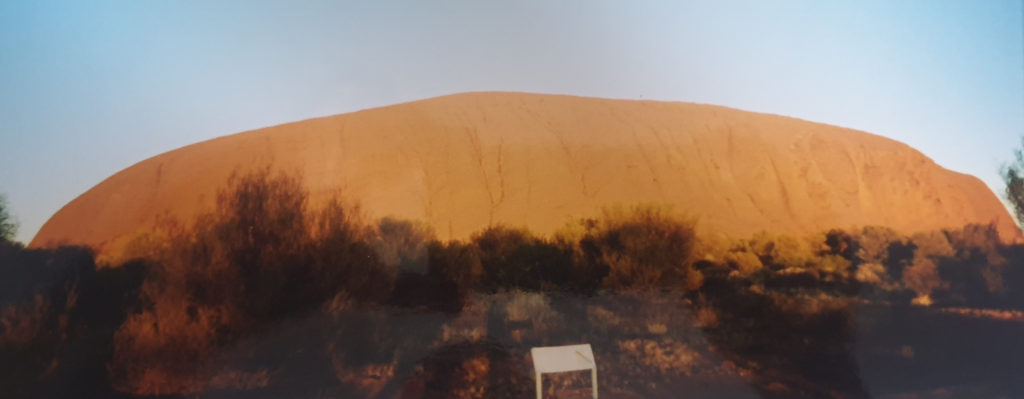
I was there at sunrise as it goes from grey through to a rusty orange and vivid red…
At that time you could still climb it. But as a sacred site for the Anangu people, they asked people not to. I respectfully complied and stuck to a ground level view doing a full circuit which was stunning in itself. The red hue of the rock changes over the course of the day with the sun.

And back at sunset, to see it turn a dusky pink. Its made all the more stunning that the sandstone monolith stands alone against a flat featureless landscape.
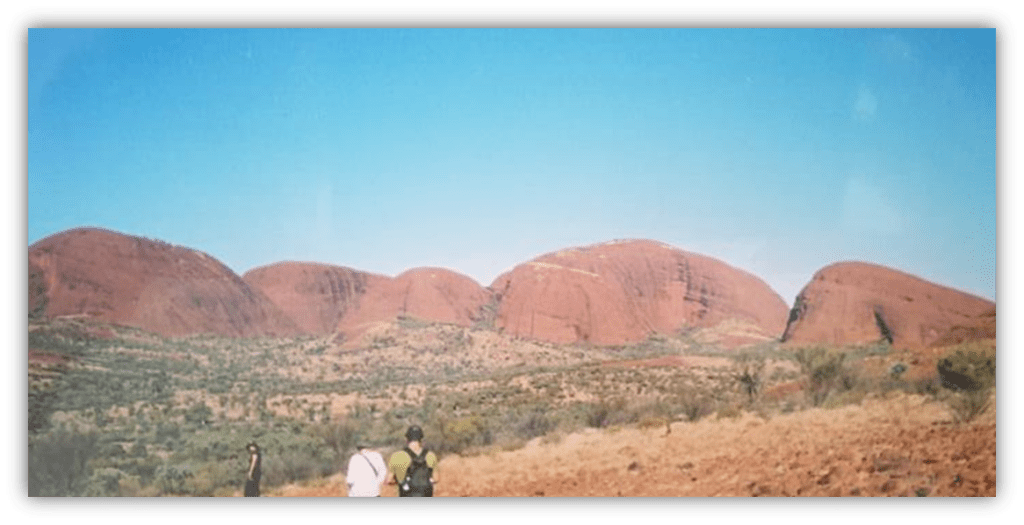
Not far from Uluru are other lesser known but still stunning sights. Kata-Tjuta which means ‘many heads’, a series of domed rock formations rising to just above 500 metres high.

Kings Canyon, a spectacular gorge with sheer walls dropping 100 metres into the canyon.
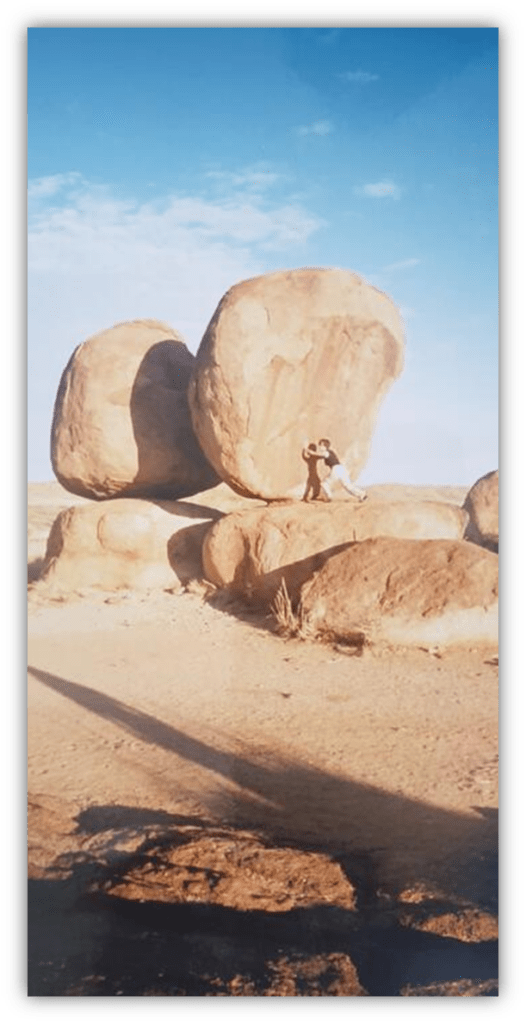
The Devil’s Marbles, large granite boulders that have weathered and eroded and now sit in precariously balanced positions on top of and against each other.
One element of the red centre that wasn’t so fun were the flies.
In transferring from one bus to another I spent half an hour waiting at a gas station offering little shade and stood there sweating and attracting flies. An unrelenting swarm buzzed round my head and took it in turns to land on me. Insect repellent had no impact. And swatting them just moved them around a bit and freed up space for another to land on me.
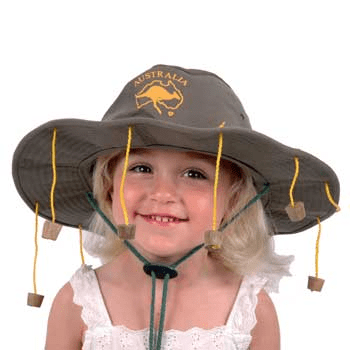
That stereotypical image of an Aussie wearing a hat with corks dangling off it began to seem like a good idea.
Carrying on north the vegetation became greener and the humidity increased as you pass the Tropic of Capricorn. This area of Australia has some amazing national parks and scenery but its location and the difficulties in getting there meant there were no problems with overcrowding.

Kakadu National Park offered huge stunning vistas, wildlife aplenty and remarkably vivid examples of rock art created by the Bininj and Mungguy peoples dating back 20,000 years.

Here and in Katherine Gorge and Litchfield National Park, there were rivers, waterfalls and water holes to cool off in. The signs warning visitors about crocodiles are a little perturbing but we were assured it was fine at that time of year.
There are plenty of tales of crocs turning up in these places.
Most, but not all times in the rainy season, drawing a distinction between the larger more aggressive saltwater crocs. The ones that you do not want to meet in a watering hole. And, the smaller freshwater crocs which are (mostly) safe to swim in the presence of as they only attack when they feel threatened. Reassuring!

Darwin, at the very top of the country, has a number of beaches which came with warning signs not to go in the sea, due to the crocs and deadly jellyfish.
Winter temperatures in Darwin were still in the 80s, and it was humid.
I was told that in summer if you have a shower the humidity is so oppressive that trying to dry yourself just produces more sweat.
They didn’t expand on whether this meant waiting to dry naturally or just not showering during summer.
The standard backpacking route in Australia is along the well populated east coast.
It was always my intention to head that way after Darwin, and make my way down to Sydney over several weeks for the plane home. I like getting off the beaten track though, and had not yet had my fill of wilderness. I undid all my planning and headed down the west coast to Perth.
Cue more endless days on buses, passing through small towns and visiting deserted beaches and beauty spots.
And then there was Port Hedland. It wasn’t a destination in itself, just a convenient location for an overnight stop on the way somewhere else. The port services nearby iron ore mines and has a frontier vibe befitting its isolation, and the heavy industry sustaining it. More specifically, we spent the night in a hostel in South Hedland, a small satellite town a few km away.
There were five us plus our guide. Three of us decided as it was Saturday night, we’d visit the local pub.
Our guide gave an evil cackle and agreed it was a great idea.
But he wouldn’t join us. From the outside it was no looker, it had the appearance of a small bungalow, one that was in need of attention. There were no windows for a start. Well, there had been windows but they were boarded over. We walked in and came to a stop just inside the door. There wasn’t a lot to take in but there was a lot to process.
The decor was minimal. Reflecting the country itself the interior was mostly empty space. The one item of furniture was a table bolted to the floor. All the way around the walls was a ledge just wide enough to rest your drink on. Once upon a time it had been painted white, now it was a faded, scuffed off-white best described as grimy.
The other main feature was the barmaid who had a similarly minimal look, wearing just underwear.
She saw the looks on our faces smiled and shrugged as if to say; “Yeah, I know. But what can you do?”
Recovering our poise, we ordered drinks and stood around the one table. There were a handful of other drinkers, stood together in the corner. They looked at us as we entered then paid us no attention. The three of us quietly made conversation doing our best not to do or say anything that might change that.
It was pretty obvious from the lack of furniture and windows that this place had seen its fair share of brawling. We drank up and decided that as fascinating as it had been, we didn’t want to outstay our welcome. Getting back to the hostel our cackling guide gleefully asked what we thought and confirmed the pubs reputation for violence which had led to them removing anything that could be thrown.
Further down the coast at Coral Bay the locals were just as fascinating but not so intimidating. The Ningaloo Reef isn’t as famous as the Great Barrier Reef but is still 260km long and at Coral Bay is so close to the beach you can pick up a snorkel and swim out to it. I swam along on the surface looking down on barrel rolling manta rays with a 20ft wingspan feeding on plankton and krill.
And so: On reaching Perth there was just the small matter of getting back to Sydney.
Fortunately there’s one of the worlds great train journeys; The Indian Pacific. A mere 65 hours taking in 3 nights covering 4,352km.
An economy ticket bought an airline style seat in which to watch the world go by and sleep in. Or, if you’re like me, to not sleep in. Over three nights I might just have made it into double figures for hours of sleep. There was a buffet and lounge car so you could get up and walk around. A necessity as my seat was next to a fellow Brit who enthusiastically told me ‘we’ would soon get everyone going in a singalong.
We?!?!
Leave me out of it, mate. He progressed to telling me ALL about his motorbikes including how the engine set up of a Harley differs to Japanese bikes.
I wished I was back talking to my alien loving colleague. I was just thankful that he got off at Adelaide after 2 nights.
Despite his best efforts it was one last special experience to round my year off.
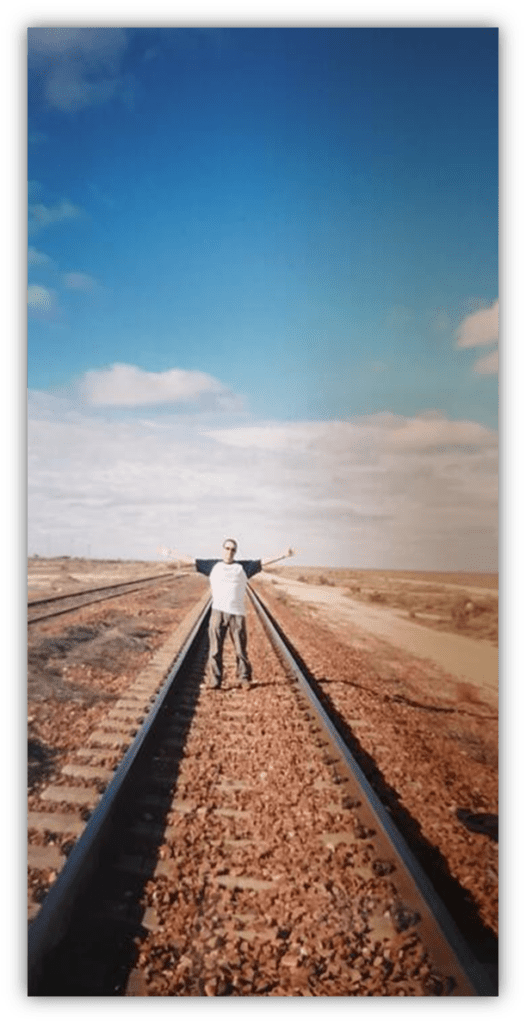
The whole of the 2nd day was spent crossing The Nullabor Plain which includes the longest stretch of straight railroad track in the world; 478km.

The Plain is flat, arid and with little vegetation other than small bushes and desert grass. If all that sounds like crossing it is the greatest cure going for insomnia, I was completely engrossed with the endless, featureless scenery.
Having had little sleep and realising that the couple of hours I’d managed was it, I headed to the lounge car before dawn. There was just me and one old guy, we nodded at each other and got down to staring out the window in restful silence other than the comforting rattle of the train. I saw a lot of sunrises and sunsets in some great locations over that year but sunrise over the vast emptiness of the Nullabor was the best I’ve seen.
As an added bonus, kangaroo bounded through the wilderness beside the train. It seemed too perfect and staged to be true.
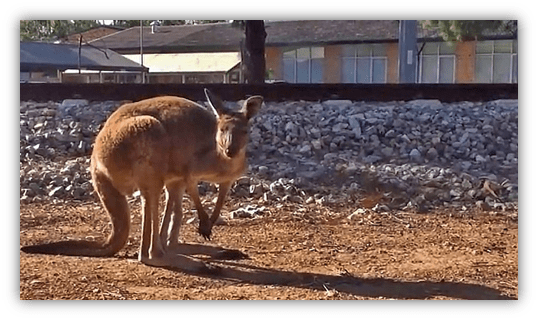
This wasn’t in the brochure.
But it was far better than any brochure made out.
Let the author know that you liked their post with a “heart” upvote!


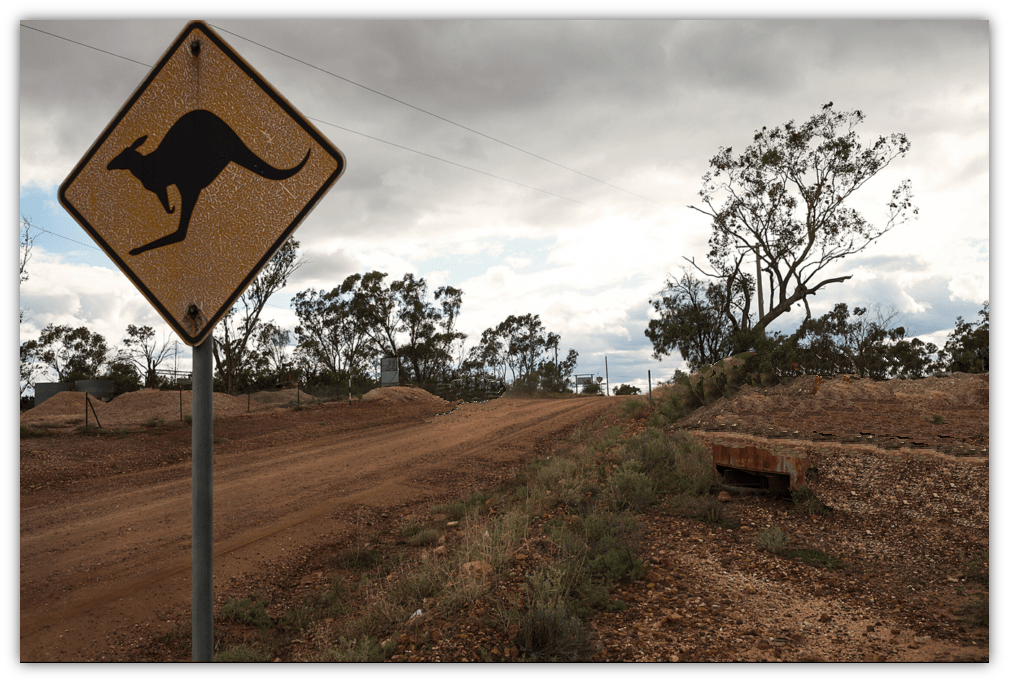
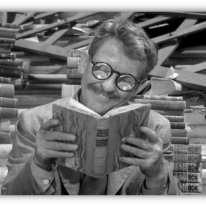
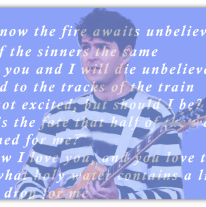
I lived in Australia for a year in 2008-9, and I played cricket four days a week, so I didn’t do as much traveling as you, but I DID do the entire East Coast, from Cairns (and the Daintree Rain Forest) down to Melbourne.
I would’ve liked to have seen more of the country, but that would’ve meant giving up a pretty amazing lifestyle.
Just before Christmas, I went to speak to an immigration lawyer about moving there permanently, and I was told I’d probably need a million dollars in the bank (I didn’t qualify under their points system; hurt cause I’d just turned 40).
Unless I wanted to go teach at an school out in the Northern Territories (but NOT in Darwin). Three year contract, then I could become a permanent resident.
I didn’t think it was worth it.
I loved visiting the Northern Territories but I don’t think I could have stayed long term. The isolated nature of life up there is fine for a brief period but even with the carrot of permanent residence and being able to move elsewhere afterwards I think I’d have done the same as you. I could have stayed another 6 months in Australia to use my visa in full, I thought about doing it and got agreement from my employer back in the UK that I could extend my sabbatical from 12 to 18 months but my main goal was seeing the country and I’d have needed to spend most of the extra 6 months working to build up more funds so decided to return home as planned.
On one hand I missed out on another 6 months there but on the other I met my wife 6 weeks after coming home so if I had stayed life would have worked out very differently.
Sounds like a really memorable time! Australia is definitely on my “some time” list. Although, as enriching as it must be to explore the undeveloped regions, I will probably go the spoiled tourist route. 😀
I take it that you, like me, have to constantly deal with less-than-ideal sleep due to being a light sleeper. At the conference I just came back from, I learned about some sleep research demonstrating that introverted people tend to be more resilient in the face of sleep deprivation than extroverts. Everyone experiences mood and performance declines with deprivation, but extraverts seem to have a lower threshold of tolerance.
As someone who just kept up my extravert wife with my snoring…my anecdotal experience seems to confirm this finding! 😬
I definitely struggle to sleep when travelling on buses, planes and trains which over the course of that year I spent a lot of time on overnight journeys. I’d agree with that research as I’m an introvert but I didn’t let lack of sleep get in the way of making the most of my travels. As long as I managed 3 to 4 hours I was good to go the next day.
There was also a fair amount of late night drinking followed by 6am starts for long bus journeys. Others would get in the bus and promptly fall asleep but I was wide eyed with wonder taking everything in regardless of the level of drinking the previous night and what time I made it to bed.
P.S. There is SO MUCH we don’t understand about indigenous Australians. There is some evidence that they may have come to the continent 60,000 years ago…by boat.
Also, they are genetically most closely related to…the Amazonian tribes, such as the Yanomamo. No one can explain that, nor explain how the chicken and sweet potato wound up on both sides of the Pacific.
Why did the chicken cross the Pacific Ocean?
To get to the other side!
Sorry, just couldn’t resist.
Indigenous Hawaiians and Maoris are related. The first Polynesians, originating from the Marquesas Islands, must be the same people who went to New Zealand. Then the Tahitians arrived, and banished them from the general population. The Tahitians left before Captain James Cook’s arrival.
The people who remained are the ones that stand in the crosshairs of some academics who have a different point of view about their legitimacy to being stewards of the land.
Growing up, I never thought of Cook as a villain. I live here. I benefited. But what’s new is a movement of academics and their acolytes building him up to be a hero. And that Hawaiians were glad to have their sovereignty stripped away from them.
The Polynesian migrations happened sometime between 600-1200 CE (AD) on catamarans. That doesn’t explain they indigenous Australians from 40 thousand years ago being closely related to a group a half a world away…especially when it was generally accepted NO ONE lived in the Americas until 20,000 years ago!
Seriously, though JJ, I’ve dreamed of visiting Australia all of my life but sadly, I’m running out of time for that dream.
Family legend is that the ancestors from the Old Sod (Ireland) who were on the right side of the law ended up in the U.S. as policemen and politicians
while the ones who frequented the gaol (jail) ended up in Australia as sheepherders and ranchers.
The long time basketball coach at our school (now deceased) married a woman from Sydney and every summer they would travel to Australia and spend a couple of months there. He would tell some great stories along the lines of what JJ informed us about the various parts of Australia.
If you’re running out of time, leave now. You can be there by Thursday.
More!!!! More, JJ!!!! I’m soooo envious you got to experience this sabbatical back in the day, such a fantastic memory to have.
Uluru is a bucket list item for me. Someday when I finally get to Australia….
Don’t know if anyone else in the States watches “Gold Rush” on the Discovery Channel, but they’ve followed the ‘kid’ miner Parker on treks to Australia during the Yukon’s winters the past couple of seasons, going around to gold mine locations across the continent. They certainly get off the beaten path, and I had to laugh reading your comment about the flies because there was one place they went to where it was just so thick with flies they could barely film properly. Then the cameraman swallowed some accidentally, and he’s like, screw this, I’m done. Lol.
The all time best character I have ever seen was on one of these episodes a couple years ago. Local Aussies taking the Alaskan miners on an Outback drive around to some mining locations, but their super rugged truck got stuck. The Aussies were like, eh, no biggie, I’ll just call my mate to tow us out. The US folks are like, are you kidding me?? We’re hours from any road, much less civilization.
Cut to a helicopter swooping in amongst the sparse trees, landing next to stuck truck. Out comes this barefoot guy looking like he came straight from a long afternoon at the pub. Says his name is Magoo. Proceeds to hitch his chopper to a tow line and promptly fishes the stuck car out of its hole while hovering about 30 feet up. Chats for a bit with the lot, crawls back into his chopper like it’s a well worn tractor on a construction site, and poof, he’s off. I’m watching the whole thing going – I would totally watch a series on Discovery of them just following Magoo around all day. He’s a trip!!
And you did a cross country train ride across Australia too?! Lucky JJ. Another fascination of mine – “Mighty Trains” on the Smithsonian Channel. I believe the one they did for Australia was The Ghan, which is the North to South run from Darwin to Adelaide. Just like you described – crazy scenery and drastic vegetation changes, and even though it’s just flat and open through the interior, there’s something magical about that vastness.
Once you get to Australia its still a way to go to reach Uluru. Fortunately it does have its own airport – at a suitably respectful distance so you don’t see planes flying over – so you don’t have to do it the hard way by road like I did. Though of course you then miss out on the jeopardy of ‘roos and emus coming to greet you at high speed.
Alice Springs, the nearest town (and the only thing that could reasonably described as a town for over 1,000km is also worth a look for a real frontier vibe. It felt like being in a ZZ Top convention when I was there based on how the men dress.